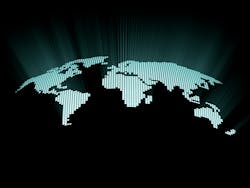Analysis Finds 38% of World's Shale Resources Face Water Stress
Governments and businesses using hydraulic fracturing to develop shale gas could face intense water competition in the world’s largest reserves, according to a new report by the World Resources Institute (WRI). “Global Shale Gas Development: Water Availability & Business Risk” is the first publicly available analysis of water availability across all potential commercial shale gas and tight oil resources worldwide. The report finds 38% of the world’s shale resources face high to extremely high water stress or arid conditions.
The Global Shale Gas Development report ranks water stress across the 20 countries with the largest shale resources. In 40% of these countries, future shale production could happen in arid conditions or under high water stress.
The report also evaluates water availability for every shale play in the 11 countries either pursuing or most likely to pursue hydraulic fracturing: Algeria, Argentina, Australia, Canada, China, Mexico, Poland, Saudi Arabia, South Africa, the U.K. and the U.S. Water availability and shale resources vary from country to country, making hydraulic fracturing’s potential unique in almost every location.
The report shares four recommendations to help governments, companies and civil societies protect water security while minimizing business risks:
- Conduct water risk assessments to understand local water availability and reduce business risk.
- Increase transparency and engage with local regulators, communities, and industry to minimize uncertainty.
- Ensure adequate water governance to guarantee water security and reduce regulatory and reputational risks.
- Minimize freshwater use and engage in corporate water stewardship to reduce impacts on water availability.
Seven indicators were used to evaluate water availability and the associated business risks for shale development: Water stress, water-supply variation among months of the year, drought severity, groundwater depletion rates, largest water user, population density, and depth of shale reserve.
The report builds upon WRI’s Aqueduct Water Risk Atlas, the world’s most high-resolution publicly available global water mapping and risk-assessment platform. Aqueduct's global water risk mapping tool helps companies, investors, governments and other users understand where and how water risks and opportunities are emerging worldwide.
Source: Water Resources Institute


